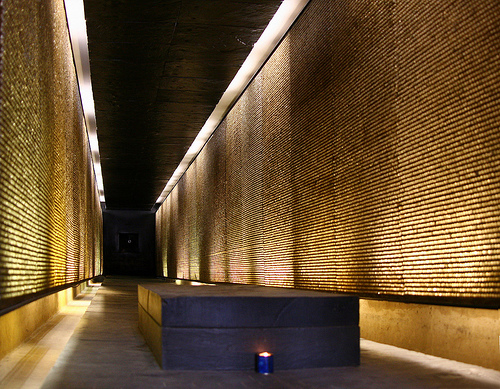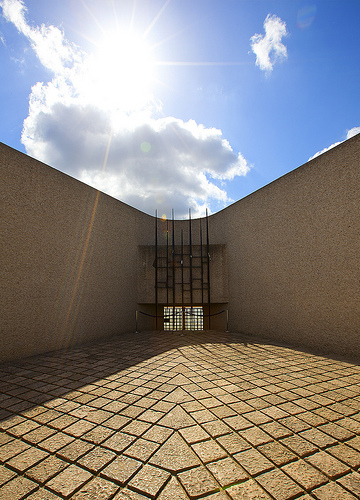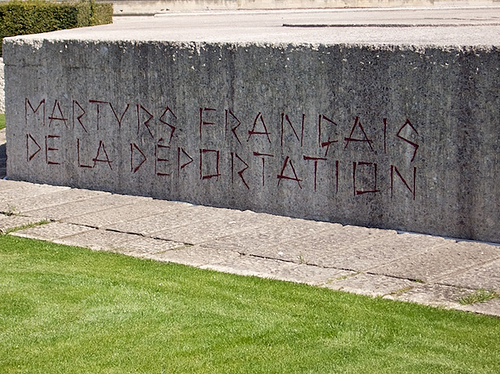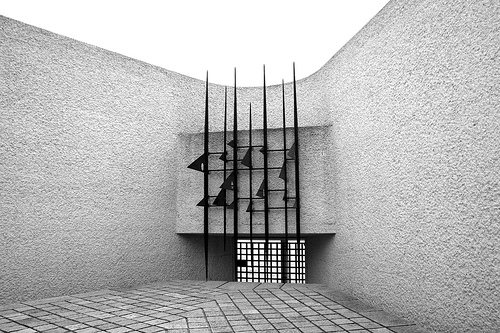World War II was full of horrors and tragedies. However, Holocaust is not the only tragedy that happened during the infamous war. Being the closest neighbor of Germany, France, particularly Paris, was also in the center of Nazi attention.
The occupation of Paris was a historical day (not in a good sense) and a beginning of the French nightmare. It resulted in a deportation of thousands of Frenchmen. So, apart from the entertainment and fun at the Parisian cabarets, take your time to visit the Deportation Memorial.

It’s one of the WWII sites in Paris. The monument is located in a very peaceful park, Square d’Ile de France. It’s actually very close to the Notre Dame de Paris, just behind its park.
The monument is not that modern. It was built in 1962. Charles de Gualle, the French president back then, inaugurated it. The architect of this meaningdul monument is Georges Henri Pingusson.
The job was quire a responsible one. The new building commemorates around 160,000 people. This much Frenchmen were deported to various Nazi concentration camps from 1940-1945. And Nazi camps were not vacation resorts. Half of those people were political activists and fighters. Homosexuals and gypsies were also among them. Around 75,000 out 160,000 were Jews. It gets worse once you go deeper into statistics. Only 2500 of them came out of the camps alive. Can you imagine? Only 2500 . . . I hope there’s no need to tell you what used to happen in the secret chimneys of those camps.

It’s very easy to write numbers down, imagining the essence of the crime is much more difficult. The atmosphere of the monument succeeds to make you stop in silence and think.
You can visit the Eiffel Tower and not worry about symbolism, because the beauty of the tower is all that matters. But you can’t play the same trick here. There is so much symbolism included in the design, that you have to be familiar with the topic to understand the meaning of this monument. Otherwise, it will be a regular monument with lots of weird and useless signs.
Everything starts with descending stairs. The nearby wall bears a writing in French: “1940 Aux Deux Cent Mille Morts Dans Les Camps Martyrs Francais de La Deportation 1945.” Here’s the translation if you’re not good at the language: “1940 To the Two Hundred Thousand Deaths in the Camps French Martyrs of the Deportation 1945.”
If you don’t mind reading, there are many information sources you can learn from before entering the monument. This way you understand the cause and the intention of the monument, which makes it really valuable.

The entire monument is very similar to the model of Nazi camps. The design was done with the intention to remind the visitors about the camps. Hence, you are to feel like a prisoner yourself when you enter the monument. Everything reminds the camps . . . the darkness, narrow corridors, etc. This is why I have to warn you beforehand. If you have claustrophobia or other fears that may be a cause for panic, it’s better to skip this attraction.
One of the features of the monument, which is often considered to be a good one, is the small number of tourists that visit it simultaneously It’s great, because you get to have the place to yourself. You can study every single detail on your way, no suspicions on potential pickpockets hiding in the crowd, there won’t be strange French people in your photos, won’t have to worry about the time wasted in queues, but the visit can also be very scary. The complex is underground, if you add a fear like claustrophobia, it becomes painfully like a modern horror film. In other words, do have a company when visiting this place, just for convenience and safety. Oh, and I hope you’re not too scared of zombies and vampires.
You would never see poems of Robert Desnos, Louis Aragon, Paul Eluard, or Jean-Paul Sartre on camp walls. Despite the mentioned designs, Deportation Memorial is really very simple. It’s not Versailles, so you won’t see expensive decor or art. The simplicity is impressive all by itself. That’s what shocks the tourists, almost every one of them who enters the memorial.
The monument includes a special room, where every person that didn’t make it back home from the camps has his or her own light.

Just like the majority of impressive memorials in the whole world, these walls also contain the names of victims. Not all of them, of course, there are simply too many of them. The walls have small triangles contain the ashes of some of them.
While you can take as many pictures as you want, some devices must be forgotten about. For example, turn off your cellphone, it would be more than disrespectful to have your ringtone filling the monument. The opening hours change depending on the season.
I love sites with meanings. It’s nice to know that the building was not meant for charging tourists money, but it has a bigger, a more important message. If you’re a sensitive person, there might be a different ‘You’ coming out of the monument. But however you change, the new You is definitely going to be a better one, a person who appreciates freedom and the opportunity to safely stroll through the streets of wonderful city of Paris.


